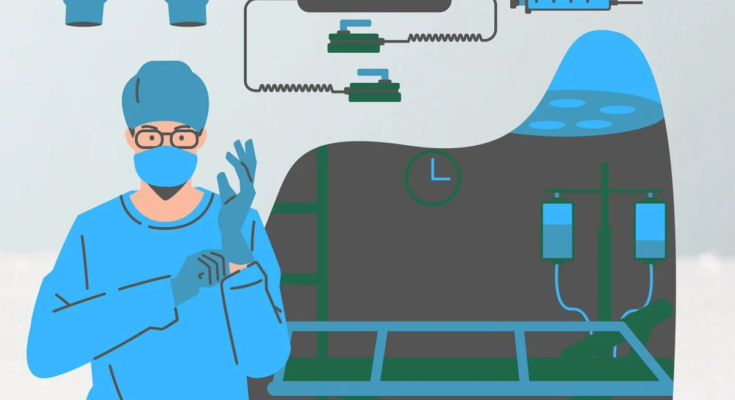In today’s fast-paced world, health issues can arise unexpectedly, leading to significant emotional and financial stress. Critical illness insurance (CII) is a financial product designed to provide peace of mind during these challenging times. This article explores the concept of critical illness insurance, its importance, coverage details, and how to choose the right policy.
What is Critical Illness Insurance?
Critical illness insurance is a type of insurance policy that pays a lump sum benefit to the insured person upon the diagnosis of a specified critical illness. This payment can be used to cover medical expenses, loss of income, or any other financial obligations the policyholder may have during recovery. Common conditions covered by critical illness insurance typically include heart attacks, strokes, certain types of cancer, and organ transplants.
Key Features of Critical Illness Insurance
- Lump-Sum Payment: Upon diagnosis of a covered condition, policyholders receive a one-time cash benefit, which can be used as they see fit.
- Coverage for Major Illnesses: Policies often cover a range of critical illnesses, including but not limited to:
- Cancer
- Heart attack
- Stroke
- Kidney failure
- Major organ transplants
- Multiple sclerosis
- Parkinson’s disease
- Flexible Usage: The lump-sum benefit can be used for medical bills, rehabilitation, home modifications, or everyday expenses during recovery.
- Renewability: Many policies offer the option to renew coverage, ensuring continued protection as the policyholder ages.
Why is Critical Illness Insurance Important?
1. Financial Security
The financial burden of a critical illness can be overwhelming. Medical treatments, rehabilitation, and other associated costs can quickly add up. Critical illness insurance provides a safety net, ensuring that policyholders have the necessary funds to cover these expenses without depleting their savings.
2. Peace of Mind
Knowing that financial support is available in the event of a critical illness can provide peace of mind to policyholders and their families. This assurance allows individuals to focus on recovery rather than worrying about financial strain.
3. Income Replacement
In cases where the policyholder cannot work due to their illness, the lump-sum benefit from critical illness insurance can help replace lost income. This support is crucial for maintaining the policyholder’s standard of living and meeting financial obligations.
4. Coverage Beyond Health Insurance
While health insurance covers many medical expenses, it often does not account for non-medical costs associated with recovery. Critical illness insurance complements health insurance by providing additional financial support during a challenging time.
Who Should Consider Critical Illness Insurance?
Critical illness insurance is suitable for various individuals, including:
1. Working Professionals
Individuals who rely on their income to support themselves and their families may benefit from critical illness insurance. The lump-sum benefit can replace lost income during recovery.
2. Family Caregivers
Those who care for dependents, such as children or elderly parents, should consider critical illness insurance. The financial support can help ensure that dependents are cared for during the policyholder’s illness.
3. High-Risk Individuals
Individuals with a family history of critical illnesses or those with high-risk occupations may find critical illness insurance particularly beneficial. This coverage provides financial protection against potential health issues.
4. Business Owners
Business owners may also consider critical illness insurance to protect their income and ensure the business continues to operate during their recovery.
How Does Critical Illness Insurance Work?
1. Policy Purchase
To obtain critical illness insurance, individuals must apply through an insurance provider. The application process typically involves providing personal information, including health history and lifestyle choices.
2. Premium Payments
Policyholders pay premiums to maintain coverage. Premium amounts can vary based on factors such as age, health status, and the specific coverage amount chosen.
3. Diagnosis of a Covered Condition
If the policyholder is diagnosed with a covered critical illness, they must provide medical documentation to the insurance provider to initiate a claim.
4. Benefit Payment
Upon approval of the claim, the insurer will issue a lump-sum payment to the policyholder. This payment can be used to cover medical expenses, lost income, or any other financial obligations.
Coverage Options in Critical Illness Insurance
1. Commonly Covered Illnesses
Most critical illness insurance policies cover a range of serious health conditions, including:
- Cancer: Various types, including breast, lung, and prostate cancer.
- Heart Attack: Coverage includes myocardial infarction and related conditions.
- Stroke: Coverage for strokes that result in significant physical impairment.
- Organ Transplants: Coverage for individuals who undergo major organ transplants.
- Kidney Failure: Coverage for end-stage renal disease requiring dialysis or transplant.
2. Exclusions
While critical illness insurance covers many conditions, some exclusions may apply, including:
- Pre-existing conditions: Illnesses diagnosed before the policy purchase may not be covered.
- Minor illnesses: Some policies may not cover less severe conditions or those that do not meet specific severity criteria.
- Unintentional injuries: Accidents or injuries may not qualify for benefits unless they result in a covered critical illness.
3. Additional Coverage Options
Many insurers offer optional riders that can enhance critical illness insurance coverage, including:
- Additional Illness Rider: Expands coverage to include more critical illnesses not originally covered.
- Child Coverage Rider: Provides coverage for children against critical illnesses.
- Return of Premium Rider: Refunds a portion of premiums paid if no claims are made during the policy term.
Costs of Critical Illness Insurance
1. Factors Influencing Premiums
The cost of critical illness insurance can vary based on several factors, including:
- Age: Younger individuals typically pay lower premiums.
- Health Status: Individuals with pre-existing conditions may face higher premiums or exclusions.
- Coverage Amount: Higher coverage limits generally result in higher premiums.
- Policy Features: Optional riders and additional benefits can increase the overall cost.
2. Average Premiums
On average, critical illness insurance premiums can range from $30 to $300 per month, depending on the above factors. Individuals should obtain quotes from multiple insurers to find the best coverage at an affordable price.
How to Choose the Right Critical Illness Insurance Policy
1. Assess Your Needs
Before purchasing a critical illness insurance policy, individuals should assess their financial situation, health status, and family medical history. Understanding personal needs can help determine the appropriate coverage level.
2. Research Insurance Providers
Look for reputable insurance companies that offer critical illness insurance. Consider factors such as financial stability, customer service, and claims handling history when making your selection.
3. Compare Policies
Obtain quotes from multiple insurers and compare the coverage options, premiums, and terms of each policy. Pay attention to the specific illnesses covered and any exclusions.
4. Consult an Insurance Agent
Working with an insurance agent who specializes in critical illness insurance can help individuals navigate the complexities of selecting a policy. Agents can provide personalized recommendations based on individual needs.
5. Review Policy Terms
Before committing to a policy, carefully review the terms and conditions. Understand the definitions of covered illnesses, waiting periods, and benefit durations.
Common Myths About Critical Illness Insurance
Myth 1: “I’m Young and Healthy; I Don’t Need It”
Many individuals believe they don’t need critical illness insurance because they are young and healthy. However, critical illnesses can strike at any age, and having coverage can provide essential financial protection.
Myth 2: “Health Insurance is Enough”
While health insurance covers many medical expenses, it often does not account for non-medical costs associated with recovery. Critical illness insurance complements health insurance by providing additional financial support during a challenging time.
Myth 3: “All Policies are the Same”
Not all critical illness insurance policies are created equal. Coverage options, exclusions, and benefit amounts can vary significantly between insurers. It’s essential to research and compare policies carefully.
Myth 4: “It’s Too Expensive”
Many individuals find that critical illness insurance is a worthwhile investment, considering the potential financial risks of a critical illness. Obtaining quotes from multiple insurers can help identify affordable options.
Critical illness insurance is a vital financial tool that provides peace of mind and financial security in the event of a serious health issue. By understanding the importance of critical illness insurance, its coverage options, and the associated costs, individuals can make informed decisions about their health and financial future. Investing in critical illness insurance ensures that you and your loved ones are protected during challenging times, allowing you to focus on recovery without the added stress of financial burdens.




